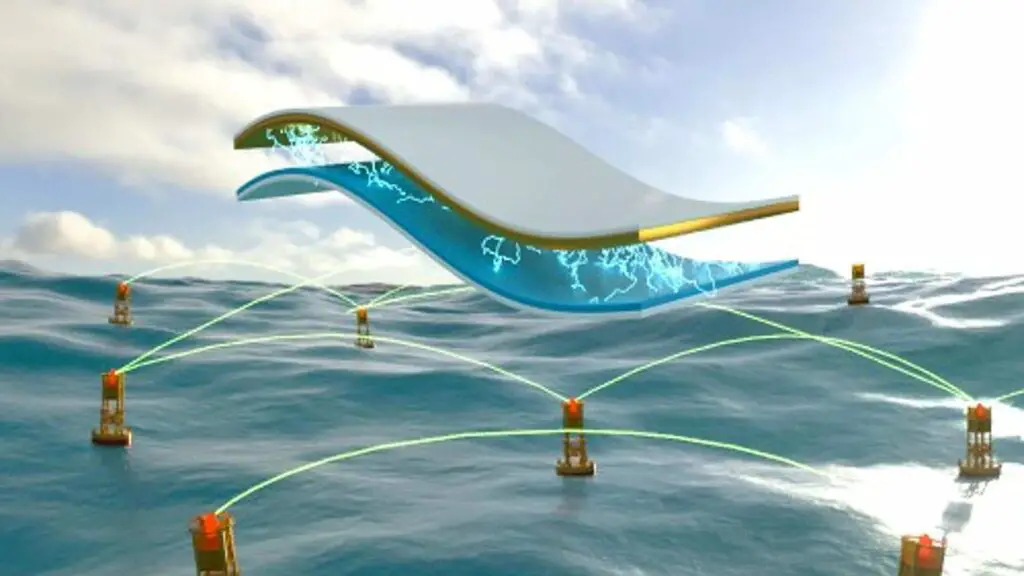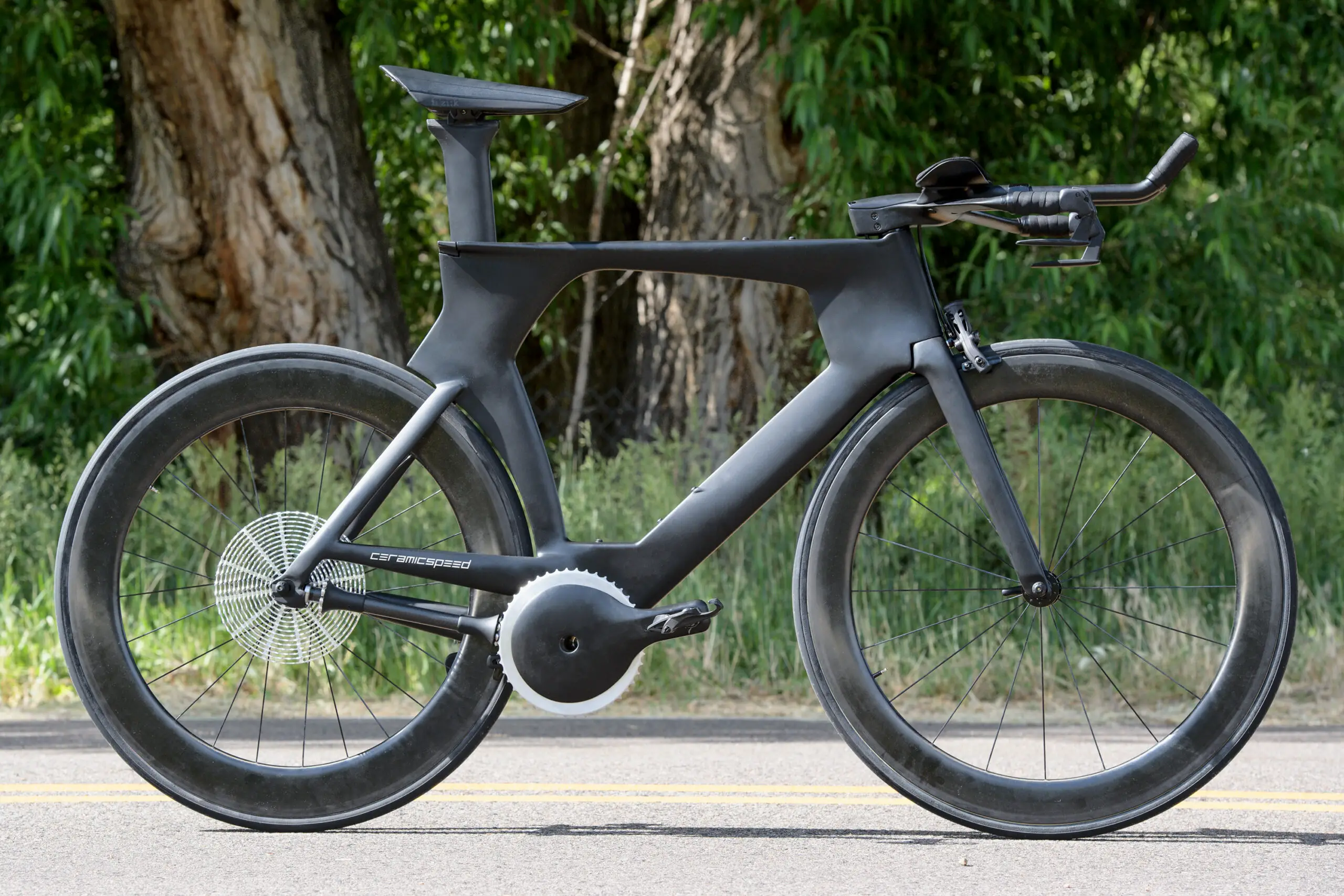A unique form of wave power could be made possible by the strategic assembly of several nanogenerators that use static electricity to generate a current. Said, Researchers.
Although it has great promise as a renewable energy source, ocean wave power is currently underdeveloped.
However, according to an article published in New Scientist on Friday, a new invention composed of small generators that rely on the triboelectric effect may soon give it the boost it needs to become economically viable.

The current generation of wave energy collectors relies on large, cumbersome electromagnetic generators comprised of propellers, magnets, and metal coils1. It’s difficult and costly to build towers on the sea floor to hold electromagnets or to secure them to the sea floor.
It is impossible to use surface floats in deep water or the open ocean, but they can be attached to pumps on the sea floor to power a generator on land. To get more fundamental, waves fundamentally include slow flows and oscillations in random directions, neither of which are optimal for electromagnetic generators.
There needs to be a major shift in strategy for harvesting wave energy. I think we can learn a lot from new technologies that generate power from human motion, which is much slower than waves.
Using static electricity as a source of power
Wave power may soon be boosted by tiny generators that rely on a phenomenon known as the triboelectric effect. A Chinese team has developed a design that doubles the previous record for this technology’s power generated per unit volume.
Unlike wind and solar energy, high prices largely prevent wave energy from taking off. Existing systems create electricity by driving electromagnetic induction, which includes magnets rotating through coils. Still, they are heavy, expensive, and inefficient, according to Joao Ventura of the University of Porto in Portugal.

There have been several attempts to use the triboelectric effect in existing technologies, but no new products based on this effect have been produced.
However, recent studies suggest that thousands of triboelectric nanogenerators linked in long chains could create enough power to make the devices practical for wave generation.
Researchers at China’s Beijing Institute of Nanoenergy and Nanosystems, led by Zhong Lin Wang, have proposed this novel idea.
In 2012, Wang designed and built the first functional triboelectric nanogenerator.
Other energy sources include wave power devices that harness the static electricity generated when different materials (like a balloon and hair) rub against one another. The triboelectric effect describes when a current is produced by releasing a static charge. “Nanogenerators” are the devices that use this effect to generate power.
Difficulties:
While many groups are working on triboelectric systems for relatively small-scale applications like powering pacemakers or producing electricity from the movement of socks or backpacks, no products featuring nanogenerators have yet reached the market.
As individual nanogenerators produce only a small amount of current, it is proposed that thousands of triboelectric nanogenerators be interconnected in long chains connected by flexible connectors to provide sufficient wave power. The triboelectric effect is used in many proposed wave power designs, and at present, these designs typically involve spheres that roll around inside each nanogenerator.
It is expected that the longevity of the nanogenerators will be the primary restriction. As a result of exposure to sunlight and salt water, the organic materials used in their construction deteriorate. If water gets inside the spheres, the devices stop working, so we may need to develop new waterproofing materials, such as highly adhesive substances used for underwater cables, to seal any openings. It is also important that the wiring can withstand severe weather.

It remains to be seen if large-scale networks of nanogenerators are viable in practice. Will they compete with established power facilities and solar and wind technologies? Since the output of solar and wind farms varies depending on the time of day or the weather, I propose that we will need multiple energy sources in the future. The energy demands of developing nations must also be met. Given its low cost and reliability, blue energy has the potential to be a useful supplementary source.
Zhong Lin Wang has developed an alternative wave power device that includes a coil similar to a Slinky encased in a cylindrical housing. When the cylinder moves up and down with the waves, the spiral’s segments touch and then move apart, creating a current.
This device generated up to 347 watts of electricity per cubic meter in laboratory tests, which is 30 times as much as comparable triboelectric designs and double the previous best.
According to the researchers, this is because they could fit more generators into the same space. When working with devices as small as nanogenerators, large numbers are essential for obtaining enough energy to have a significant impact.
Future developments in wave power
This isn’t the only project attempting to change how wave power is generated and utilized. In August 2021, researchers developed a prototype system that they claimed could double the power harvested from ocean waves.
The innovative wave energy converter developed by a research team led by RMIT University is said to perform twice as well as equivalent technologies developed previously by employing a never-before-seen dual-turbine design.
CalWave, a U.S.-based startup, reported completing an open-ocean test of their xWave clean power technology in September 2022, demonstrating over 99 percent system uptime over 10 months.
“The group made a huge advance in constructing a new triboelectric structure with high power density,” Ventura explains.

According to him, the structure employed to create power in triboelectric nanogenerators is typically much larger than the thin layer of triboelectric. “If you can pack more into the same space, you get significant advantages.”
According to Ventura, the research removes some primary impediments to deploying triboelectric nanogenerators for wave energy collecting.
These developments are crucial as wave energy is one of the world’s most highly anticipated renewable energy sources.
While the sun does not always shine and the wind does not always blow, making solar and wind energy unreliable, waves always move to a certain degree. Therefore, if a device could harness even its most minor movements, it could be a game changer in our renewable future.





